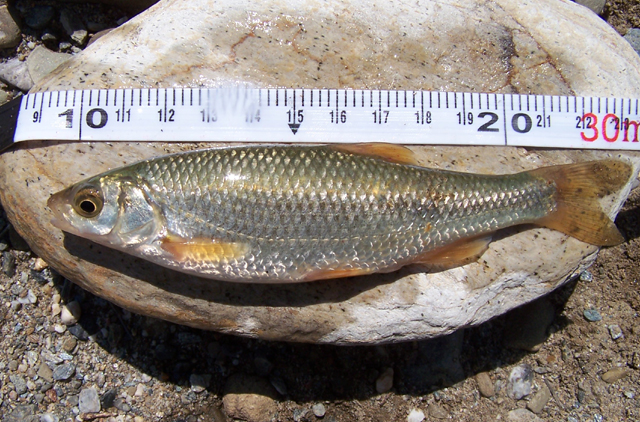| Leuciscidae (Minnows), subfamily: Leuciscinae |
| 25 cm TL (male/unsexed) |
|
benthopelagic; freshwater, non-migratory |
| Europe: endemic to the Evrotas River in Peloponnesus, Greece. |
|
Dorsal spines (total): 3-3; Dorsal soft rays (total): 8-8; Anal spines: 3-3; Anal soft rays: 8-10. 38-42 vertebrates. Dark pigmentation on peritoneum and body. Dark stripe from eye to caudal fin base. |
| Inhabits springs and streams with fast flow and open water (Ref. 59043). Occurs in deeper waters of the river and in the ditches of lowland, preferring places where current is slow. Found over stony, gravelly and sandy bottoms. Omnivore. Feeds throughout the water column (Ref. 26100). Preys predominantly on aquatic insects. Eggs are adhesive, 2 mm in diameter (Ref. 59043). Threatened due to water abstraction and pollution (Ref. 26100). |
|
Endangered (EN); Date assessed: 23 October 2023 (B1ab(iii)+2ab(iii)) Ref. (130435)
|
| harmless |
Source and more info: www.fishbase.org. For personal, classroom, and other internal use only. Not for publication.
